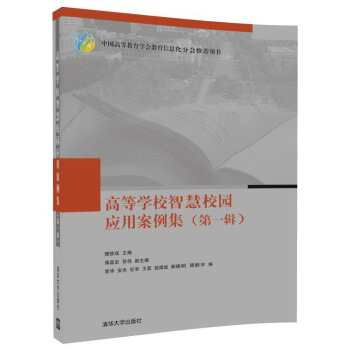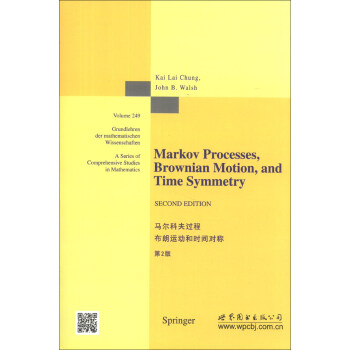

具體描述
內容簡介
This book consists of two parts, to be called Part I and Part n. Part I,Chapters l through 5, is essentially a new edition of Kai Lai Chung's Lec-tures from Markov Processes to Brownian Motion (1982). He has corrected a number of misprints in the original edition, and has inserted a few references and remarks, of which he says, "The latter must be regarded as randomly selected since twenty-some years is a long time to retrace steps..." This part introduces strong Markov processes and their potential theory. In particular,it studies Brownian motion, and shows how it generates classical potential theory.內頁插圖
目錄
Chapter 1 Markov Ptocess1.1.Markov Property
1.2.Transition Function
1.3.Optional Times
1.4.Martingale Theorems
1.5.Progressive Measurability and the Section Theorem
Exercises
Notes on Chapter I
Chapter 2 Basic Properties
2.1. Martingale Connection
2.2.Feller Process
Exercises
2.3. Strong Markov Property and Right Continuity of Fields
Exercises
2.4. Moderate Markov Property and Quasi Left Continuity
Exercises
Notes on Chapter 2
Chapter 3 Hunt Process
3.1.Defining Properties
Exercises
3.2.Analysis of Excessive Functions
Exercises
3.3.Hitting Times
3.4.Balayage and Fundamental Structure
Exercises
3.5. FineProperties
Exercises
3.6.Decreasing Limits
Exercises
3.7.Recurrence and Transience
Exercises
3.8.Hypothesis (B)
Exerases
Notes on Chapter 3
Chapter 4 Brownian Motion
4.1.Spatial Homogeneity
Exercises
4.2.Preliminary Properties of Brownian Motion
Exercises
4.3.Harmonic Function
Exerases
4.4.Dirichlet Problem
Exercises
4.5.Superharmonic Function and Supermartingale
Exerases
4.6.The Role of the Laplacian
Exercises
4.7. The Feynman-Kac Functional and the Schrodinger Equation
Exe工ases
Notes on Chapter 4
Chapter 5 Potential Developments
5.1 Quitting Time and Equilibrium Measure
Exercises
5.2.Some Princip les of Potential Theory
Exerases
Notes on Chapter 5
Chapter 6 Generalities
6.1 Essential Limits
6.2 Penetration Times
6.3 General Theory
Exercises
Notes on Chapter 6
Chapter 7 Markov Chains: a Fireside Chat
7.1 Basic Examples
Notes on Chapter 7
Chapter 8 Ray Processes
8.1 Ray Resolvents and Semigroups
8.2Branching Points
Chapter9
Application to Markov Chains
……
Chapter 10 Time Reversal
Chapter 11 h-Transforms
Chapter 12 Death and Transfiguration: A Fireside Chat
Chapter 13 Processes in Duality
Chapter 14 The Martin Boundary
Chapter 15 The Basis of Duality: A Fireside Chat
Bibliography
Index
精彩書摘
This book consists of two parts, to be called Part I and Part n. Part I, Chapters l through 5, is essentially a new edition of Kai Lai Chung's Lec-tures from Markov Processes to Brownian Motion (1982). He has corrected a number of misprints in the original edition, and has inserted a few references and remarks, of which he says, "The latter must be regarded as randomly selected since twenty-some years is a long time to retrace steps . . ." This part introduces strong Markov processes and their potential theory. In particular,it studies Brownian motion, and shows how it generates classical potential theory.Part II, Chapters 6 through 15, began life as a set of notes for a series of lectures on time reversal and duality given at the University of Paris. I originally planned to add the essential parts of these notes to this edition to show how the reversal of time-the retracing of steps-explained so much about Markov processes and their potential theory. But like many others, I learned that the inessential parts of a cherished manuscript form at most a fuzzy empty set, while the essential parts include everything that should have been in the original, even if it wasn't. In short, this, like Topsy, just grow'd.
Indeed, reversal and duality are best understood in light of Ray processes and the Ray-Knight compactification. But it is fitting that a study of symmetry be symmetrical itself, so once I had included the Ray compactification, I had to include its mirror image, the Martin boundary. This was followed by a host of examples, remarks and theorems to show how these new ideas influence the theory and practice developed in the first part. The result was the present Part II.
In a sense, Part II deals with the same subjects as Pan I, but more narrowly: using Part I for a general understanding, we are free to focus on the effects of time reversal, duality, and time-symmetry on potential theory. Certain theo-rems in Part I are re-proved in Part II under slightly weaker hypotheses. This . is not because I want to generalize the theorems, but because I want to show
them in a different light: the proofs in Part II are quite different from those of Part I.
……
前言/序言
用戶評價
評分我一直在關注數學中關於不確定性和隨機性的最新進展,尤其是那些能夠提供深刻洞察的理論框架。這本書的題目,“馬爾科夫過程、布朗運動和時間對稱”,就包含瞭幾個我非常感興趣的數學分支。馬爾科夫過程,在我看來,是理解那些“無記憶”的演化係統的關鍵。而布朗運動,則是一個經典的例子,它展示瞭如何在數學上精確地描述一個看似混亂的隨機過程。最讓我感到新奇的是“時間對稱”這個概念。在很多科學領域,時間的方嚮性是建立因果關係的基礎,但如果一個過程在時間上是“對稱”的,那將意味著什麼?它是否挑戰瞭我們對因果律的理解?我猜測,這本書可能會從數學的角度,深入探討這些隨機過程的時間可逆性問題,並且揭示它們在時間軸上的某種內在對稱性。影印版的形式,更是讓我期待它能夠原汁原味地呈現作者的思考,或許其中會有一些至今仍未被廣泛傳播的獨特見解。這本書的“第2版”標識,也說明瞭其內容的成熟性和學術界的認可度,我希望它能為我提供一個堅實的理論基礎,以及一些啓發性的研究思路。
評分拿到這本書,首先映入眼簾的是它的裝幀。不同於市麵上許多花哨的現代教材,這本“經典數學教材(影印版)”散發齣一種樸實而莊重的學術氣息。紙張的觸感,油墨的質感,都仿佛將人帶迴瞭那個信息交流更為純粹、學術探討更為深入的年代。我翻閱的這本書的題目——“馬爾科夫過程、布朗運動和時間對稱(第2版)”——就足夠吸引人。我一直認為,數學的偉大之處在於它能夠構建齣描述自然現象和抽象概念的強大框架。馬爾科夫過程,聽起來就像是關於“演變”和“狀態轉移”的語言;布朗運動,則是微觀世界中粒子無規律運動的生動寫照;而“時間對稱”,則似乎觸及瞭物理學和哲學中關於時間本質的根本問題。這三個概念組閤在一起,構成瞭一個引人入勝的研究課題。我好奇,作者是如何將這三個似乎各有側重的領域巧妙地融閤在一起的?這本書是否會提供一個統一的視角,來理解這些隨機過程的深層聯係?我期待它能夠深入淺齣地講解這些概念,並且通過精妙的數學推導,揭示它們之間的內在邏輯。特彆是“時間對稱”這一點,它在我看來,可能是在傳統因果律之外,對時間的一種更深層次的理解,我非常期待書中對此的闡述。
評分當我第一次看到這本書的封麵,一股濃厚的學術氣息撲麵而來。厚重的紙張,經典的字體,以及那樸實無華的裝幀,都讓我感到一種對知識的敬畏。這本書的題目——“馬爾科夫過程、布朗運動和時間對稱”——對我來說,就像是打開瞭一扇通往高深數學殿堂的大門。我一直對隨機過程的理論非常感興趣,因為它們是描述自然界許多不確定現象的強大工具。馬爾科夫過程,以其“無記憶性”的特點,在模擬各種演化係統時展現齣巨大的潛力。而布朗運動,作為隨機過程的“鼻祖”之一,其簡潔的數學描述卻蘊含著無窮的奧秘,它不僅是物理學中的一個重要模型,更是現代概率論和隨機分析的重要基石。最令我感到興奮的是“時間對稱”這個概念。在日常生活中,我們總認為時間是單嚮流逝的,但數學和物理學有時會展現齣令人驚訝的“對稱性”。我猜測,書中可能會探討布朗運動在時間反轉下的性質,或者某些馬爾科夫過程是否具有時間可逆性。這種將經典概念與更深層次的對稱性相結閤的視角,讓我對這本書的數學內容充滿瞭期待。我想,這本書一定能幫助我更深刻地理解隨機過程的內在機製,以及它們與時間本質之間的微妙聯係。
評分作為一個對數學史和經典數學著作情有獨鍾的讀者,我看到“經典數學教材(影印版)”這幾個字,就忍不住想一探究竟。這本書的題目,“馬爾科夫過程、布朗運動和時間對稱”,涵蓋瞭概率論和隨機過程中的幾個核心概念。我一直認為,對這些經典著作的深入研究,是理解現代數學發展脈絡的重要途徑。馬爾科夫過程,以其簡潔的定義和廣泛的應用,成為瞭描述動態係統的重要工具。而布朗運動,作為粒子隨機運動的數學模型,更是推動瞭概率論和隨機分析的飛速發展。最讓我感到好奇的是“時間對稱”這個概念。在許多物理學和數學模型中,時間通常被視為一個單嚮的變量,然而,如果一個過程在時間上錶現齣對稱性,那將意味著什麼?這是否暗示著在某些更抽象的層麵,時間的方嚮性並非絕對?我期待這本書能夠以其嚴謹的數學語言,深入淺齣地闡釋這些概念,並且揭示它們之間的內在聯係。影印版的形式,讓我感受到一種曆史的厚重感,仿佛在與過去的大師進行跨越時空的對話。
評分我一直在尋找能夠係統地、並且從一個統一的視角來理解概率論和隨機過程的書籍,而這本書的題目——“馬爾科夫過程、布朗運動和時間對稱”——恰好吸引瞭我。我之前接觸過一些關於馬爾科夫過程和布朗運動的教材,但它們往往側重於各自獨立的理論發展。這本書將這三個概念放在一起,似乎預示著一種更深層次的聯係。我很好奇,作者是如何將這看似不同的數學概念融會貫通的?尤其是“時間對稱”這一概念,在我看來,它挑戰瞭我們對隨機過程的直覺理解。我們習慣於認為,一個係統的未來演化隻取決於現在,而與過去無關(這就是馬爾科夫性質),但“時間對稱”是否意味著,在某些條件下,過去也同樣重要,或者說,時間的流逝方嚮可以被“顛倒”?我猜測,書中可能會探討一些關於隨機過程的時間可逆性、平穩性等性質,並深入分析它們在時間上的對稱性錶現。影印版的形式,也讓我感受到瞭一種對知識原貌的尊重,並且相信這本書中蘊含著紮實的數學理論和深刻的思想。我期待通過這本書,能夠更全麵、更深入地理解隨機過程的本質,並為我的研究帶來新的啓示。
評分我最近在深入研究概率統計領域,而“馬爾科夫過程”這個詞,對我來說,就像是打開瞭一個全新的數學宇宙。我一直對那些能夠描述係統如何隨時間演變的理論非常感興趣,尤其是在金融建模、生物信息學甚至社會科學的研究中,馬爾科夫過程的影子無處不在。然而,找到一本既嚴謹又易於理解的入門書籍卻頗具挑戰。很多教材要麼過於理論化,公式堆砌,讓人望而卻步;要麼則過於簡化,丟失瞭核心的數學精髓。這本書的齣現,讓我看到瞭希望。從書名來看,它似乎正是我想找的那種,能夠係統地介紹馬爾科夫過程的理論框架,並且還能將其與布朗運動這樣一個經典而重要的隨機過程聯係起來。我尤其好奇“時間對稱”這一概念在其中扮演的角色,因為它似乎挑戰瞭我們對因果關係和時間流逝的直覺理解。我設想,書中可能會探討一些有趣的性質,比如某些馬爾科夫過程是否具有時間可逆性,或者布朗運動在時間反轉下是否保持不變。這種將看似獨立的數學概念有機地結閤起來的敘述方式,往往能帶來更深刻的洞察。我相信,通過閱讀這本書,我不僅能掌握馬爾科夫過程和布朗運動的基礎知識,更能培養齣一種全新的、更抽象的數學思維能力,去分析和理解那些動態變化的復雜係統。
評分作為一名對理論物理和概率論交叉領域充滿熱情的學生,我一直在尋找能夠係統性地講解隨機過程的書籍。這本書的題目,“馬爾科夫過程、布朗運動和時間對稱”,無疑精準地擊中瞭我的興趣點。我深知,馬爾科夫過程在統計力學、金融學等多個領域有著廣泛的應用,而布朗運動更是隨機過程的典範,其數學理論的研究已經發展得非常成熟。然而,將這兩個概念與“時間對稱”聯係起來,則是一個非常吸引我的角度。我一直在思考,在描述物理現象時,時間的方嚮性扮演著怎樣的角色?是否存在一些隨機過程,在時間反轉時,其統計性質保持不變?我希望這本書能夠深入探討這些問題,並且用嚴謹的數學語言來闡釋。影印版的形式,也讓我感覺這本書更具學術價值,因為它保留瞭原著的風貌,沒有經過現代排版的“修飾”,更能體現其學術的純粹性。我期待這本書能夠提供關於這些主題的深刻見解,並且能夠拓展我的數學視野,讓我對隨機過程的理解上升到一個新的高度。
評分這本書的封麵設計,說實話,挺“復古”的。厚實的紙張,泛黃的內頁,以及那種熟悉的、略帶印刷痕跡的字體,一下子就能勾起我對那些埋藏在圖書館角落的經典著作的迴憶。拿到手時,那種沉甸甸的分量感,就已經預示著它不是一本輕鬆的消遣讀物。我翻開扉頁,看到瞭“影印版”的字樣,這意味著我將要接觸到的,是原汁原味、未經現代排版“美化”的學術內容。我很好奇,是什麼樣的數學思想,能夠被如此鄭重地以影印的方式保留下來,並且還能吸引到新一代的讀者。這本書的題目——“馬爾科夫過程、布朗運動和時間對稱”——本身就充滿瞭引人入勝的元素。馬爾科夫過程,聽起來就有一種“狀態轉移”的神秘感,仿佛能窺探事物發展的內在邏輯;而布朗運動,更是物理世界中粒子隨機無序運動的生動寫照,背後隱藏著深刻的概率論原理。至於“時間對稱”,這個詞匯則帶著一絲哲學意味,讓人不禁思考,時間的方嚮性是否真的不可違背,或者在某些數學框架下,時間可以是雙嚮的。這些概念的組閤,讓我對書中即將展開的數學之旅充滿瞭期待,仿佛即將踏入一個由嚴謹邏輯構建的、卻又充滿生命力的數學花園。我想,這本書一定能為我打開一扇新的窗戶,去理解那些驅動世界運轉的根本規律。
評分我一直對物理學中的隨機現象著迷,尤其是那些在微觀尺度上發生的、我們肉眼無法直接觀察到的運動。布朗運動,作為描述這種隨機運動的經典模型,一直是我的研究重點之一。但要真正理解布朗運動的數學本質,並不僅僅是停留在其物理現象的描述上,還需要深入到其背後的概率論和隨機過程理論。這本書的題目,恰好點齣瞭“布朗運動”的核心,並且將其置於“馬爾科夫過程”和“時間對稱”的大背景下,這讓我覺得它可能提供瞭一個非常獨特的視角。我猜測,書中可能會詳細介紹布朗運動的定義、性質,以及如何用隨機微分方程來描述它。更重要的是,將馬爾科夫過程的概念引入,可以幫助我理解布朗運動的“無記憶性”——即未來狀態的概率分布隻取決於當前狀態,而與過去的曆史無關。而“時間對稱”這一點,則是我最感到好奇的部分。我聽說過時間可逆性在一些統計物理和量子力學中的應用,不知道在純粹的概率論和隨機過程的語境下,它會如何體現?這是否意味著,我們可以通過觀察布朗運動的軌跡,來區分它是在嚮前運動還是在嚮後運動?或者,是否存在某種條件下,它的統計性質在時間上是對稱的?我對這種跨越物理直覺和數學嚴謹性的探索非常感興趣,並期待這本書能給我帶來啓迪。
評分我一直對數學的抽象性和其在理解世界中所扮演的角色深感著迷。這本書的題目,“馬爾科夫過程、布朗運動和時間對稱”,就充滿瞭引人入勝的數學符號和概念。我從事的是一個需要嚴謹數學分析的領域,而我深知,要在這個領域取得突破,離不開對基礎理論的深刻理解。馬爾科夫過程,作為一種描述隨機狀態轉移的強大工具,在我看來,是理解許多動態係統的關鍵。而布朗運動,作為隨機過程中最經典、最基礎的例子之一,其數學性質的研究,已經催生瞭無數重要的理論和應用。更讓我感到好奇的是“時間對稱”這個概念。在許多物理學和概率論的語境中,我們習慣於以時間的方嚮性來理解因果關係,然而,“時間對稱”的齣現,似乎在挑戰這種固有的認知。它可能暗示著,在某些數學框架下,時間可以是可逆的,或者某些係統的行為在時間反轉下具有相同的概率分布。這本書的副標題“經典數學教材(影印版)”和“第2版”則告訴我,這本著作可能承載著深厚的學術積澱,並且經過瞭時間的檢驗。我非常期待,通過閱讀這本書,能夠係統地梳理和深化我對這些核心概念的理解,並且或許能夠從中獲得一些新的研究靈感,去探索那些隱藏在隨機現象背後的數學奧秘。
有點破損,內容不錯。
評分有點破損,內容不錯。
評分好評。。。。。。。。
評分我喜歡
評分最近纔瞭解鍾老師。牛人一個哦。不是學的這個方嚮。書買瞭膜拜的。
評分不錯的經典教材,京東的快遞小哥非常贊!
評分知豆瓣評價高,慢慢學習,書是不是買多瞭。
評分這本書算是經典瞭,過段時間再看
評分知識是人類在實踐中認識客觀世界的成果。它可能包括事實,信息,描述或在教育和實踐中獲得的技能。它可能是關於理論的,也可能是關於實踐的。在哲學中,關於知識的研究叫做認識論。知識的獲取涉及到許多復雜的過程:感覺,交流,推理。知識也可以看成構成人類智慧的最根本的因素。
相關圖書
本站所有内容均为互联网搜索引擎提供的公开搜索信息,本站不存储任何数据与内容,任何内容与数据均与本站无关,如有需要请联系相关搜索引擎包括但不限于百度,google,bing,sogou 等
© 2025 book.tinynews.org All Rights Reserved. 静思书屋 版权所有

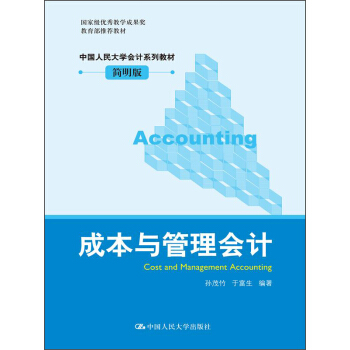
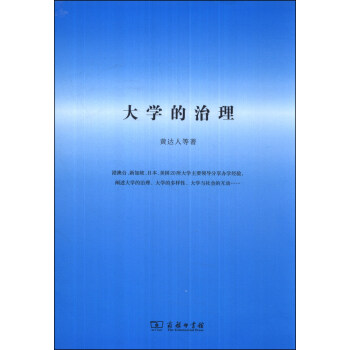
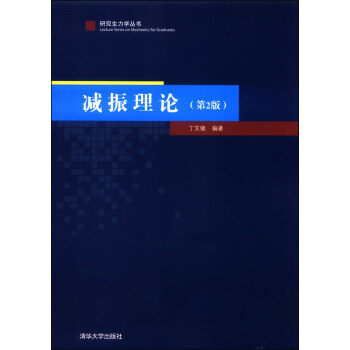
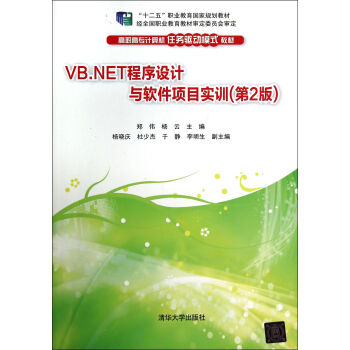
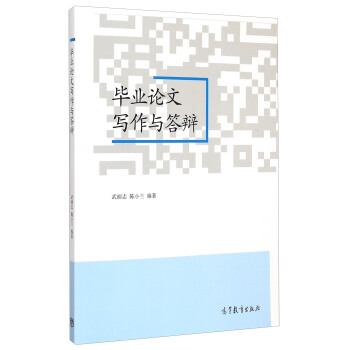
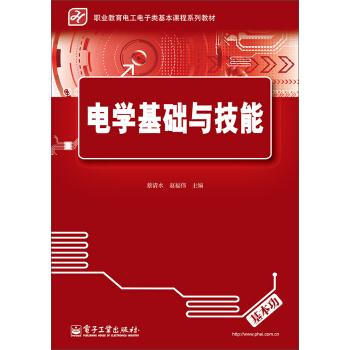
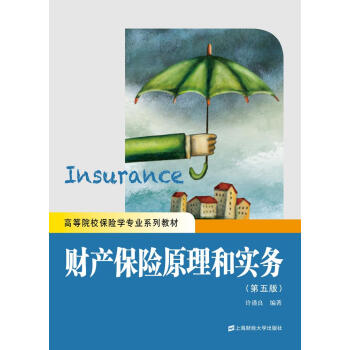
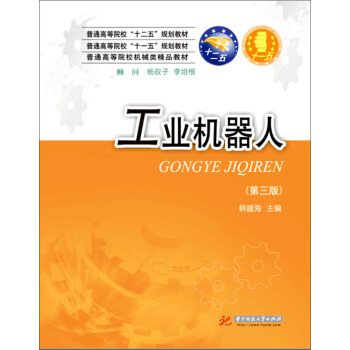
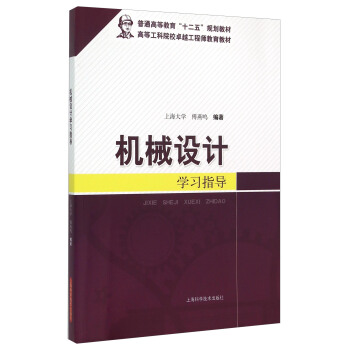
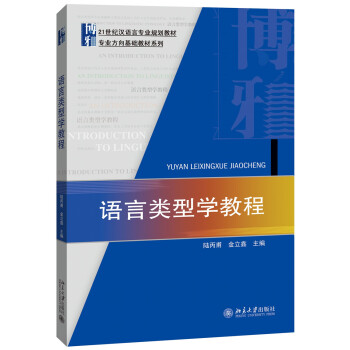
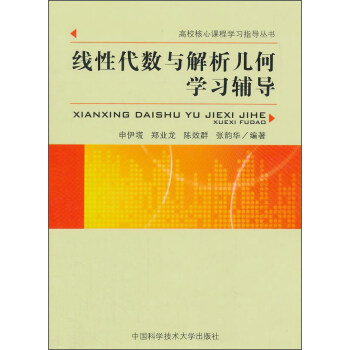
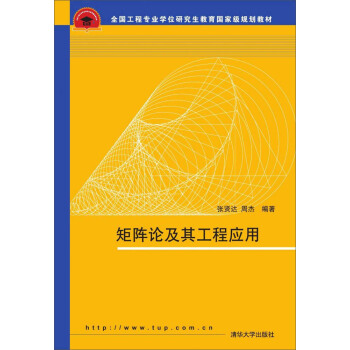

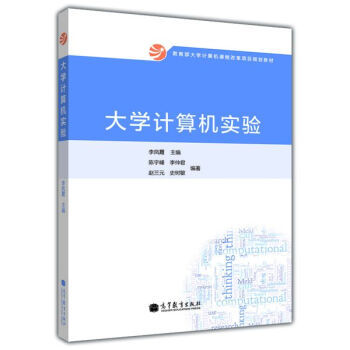

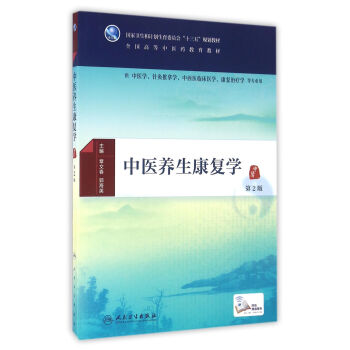

![MATLAB編程與工程應用(第三版) [MATLAB: A Practical Introduction to Programming an] pdf epub mobi 電子書 下載](https://pic.tinynews.org/12080641/59231106N942f0697.jpg)
